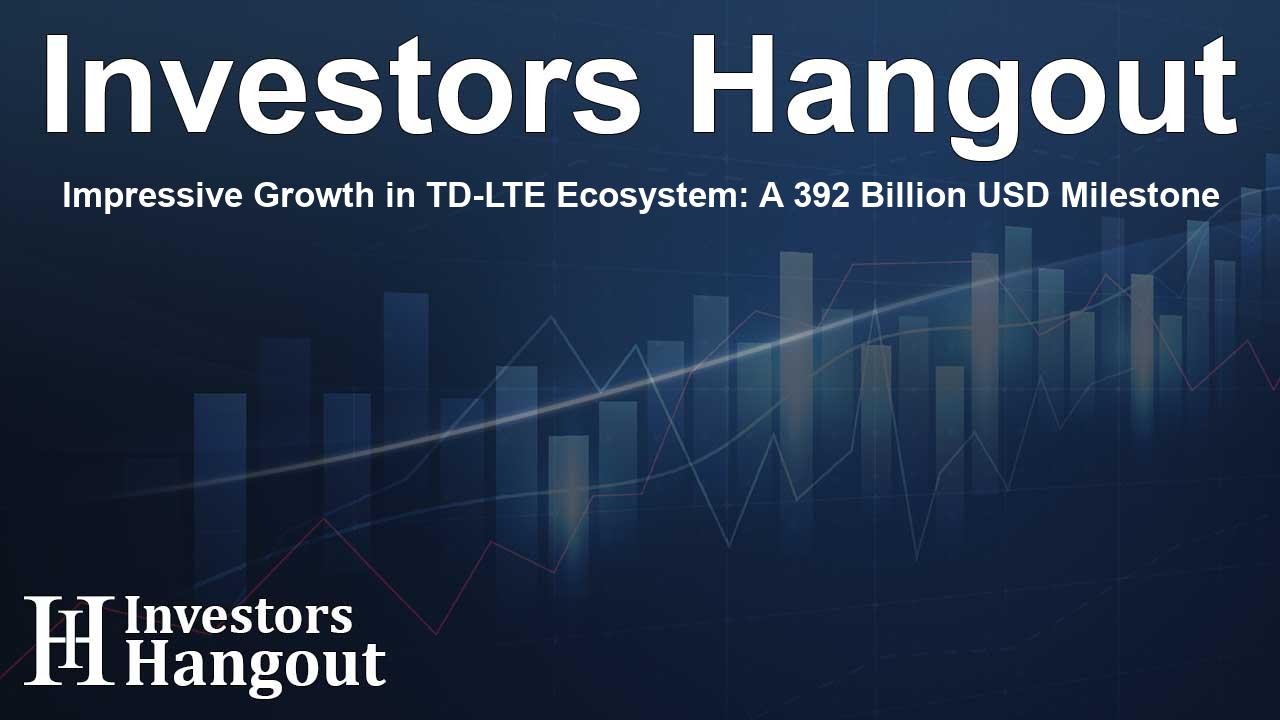Impressive Growth in TD-LTE Ecosystem: A 392 Billion USD Milestone

TD-LTE Ecosystem Market Overview
The TD-LTE ecosystem represents a dynamic framework that integrates various players, including vendors, operators, device manufacturers, and service providers. Each participant works collaboratively to enable seamless connectivity across numerous sectors. As the demand for scalable and reliable wireless infrastructure continues to rise, this market is predicted to grow considerably.
Projected Growth and Market Size
The TD-LTE Ecosystem was valued at approximately USD 120 billion and is forecasted to reach a remarkable USD 392 billion by the end of the projected period, growing at an impressive compound annual growth rate (CAGR) of 18.6%. This surge is primarily attributed to the increasing need for high-speed, dependable connectivity.
Key Drivers Behind Market Expansion
Several factors contribute to the growth of the TD-LTE ecosystem market. One significant driver is its ability to foster innovation in various industries, such as manufacturing, healthcare, and public transportation. By providing tailored connectivity models, TD-LTE networks enhance adaptability for data-heavy and latency-sensitive operations. This flexibility is vital as businesses seek reliable broadband solutions to support their operations.
Uplink and Downlink Services
Uplink biased services are essential for the success of the TD-LTE ecosystem, promoting optimized data transmission. These services are crucial for applications like industrial monitoring and live streaming where uploading data efficiently is necessary. Performance improvements in these areas contribute directly to the robustness of the entire network.
Technological Trends Impacting TD-LTE Ecosystem
Various technological advancements are shaping the TD-LTE ecosystem. Service providers are increasingly focusing on real-time analytics and mission-critical operations, leading to the development of flexible TD-LTE frameworks that cater to specific industry requirements. This progression is vital in industries where continuous uptime and integration are key to operational success.
Role of Enterprises in Accelerating Growth
Businesses are integral to the expansion of the TD-LTE ecosystem by adopting private and hybrid network solutions. Industries such as logistics and healthcare rely on TD-LTE's capabilities for seamless connectivity, enabling applications like real-time data processing and machine-to-machine communication.
Industry Applications and Major Players
The TD-LTE ecosystem serves various applications across multiple industries including but not limited to enterprises, healthcare, retail, and education. Key players in this market, such as Huawei Technologies, Ericsson, Nokia Networks, and Qualcomm, continue to enhance their offerings, driving competition and innovation in the ecosystem.
Global Market Presence
In terms of geographical distribution, regions like Asia-Pacific are witnessing substantial adoption driven by robust manufacturing ecosystems and modernization efforts. North America is also a significant player, focusing on public safety and smart infrastructure developments.
Future Outlook
With the growing demand for mobile broadband capacity, the TD-LTE ecosystem is well-positioned for development. Continuous upgrades in network infrastructures, including advanced base-station configurations and new small-cell deployments, are crucial for maintaining and enhancing service quality. The future of TD-LTE is intertwined with advancements in network design, enabling flexible scaling for diverse applications.
In conclusion, the TD-LTE ecosystem is on the brink of a significant transformation, propelled by rising demand, technological advancements, and a collaborative industry approach. This growth landscape offers a promising future for both businesses and consumers alike, ensuring that the need for reliable and fast wireless communication is effectively met.
Frequently Asked Questions
What is the projected market size for TD-LTE Ecosystem?
The TD-LTE ecosystem is expected to reach approximately USD 392 billion by the end of the forecast period.
What are the primary drivers of the TD-LTE Ecosystem market?
The main drivers include the demand for scalable connectivity solutions, the ability to support various applications, and collaboration among industry providers.
What sectors benefit from the TD-LTE Ecosystem?
Sectors like transportation, healthcare, education, and retail gain significantly from the integration of TD-LTE networks.
Who are the key players in the TD-LTE market?
Key players in the market include Huawei, Ericsson, Nokia, Qualcomm, and several others who are leading innovations in the ecosystem.
What technological trends are influencing TD-LTE?
Continuous enhancements in infrastructure, the rise of IoT, and demand for real-time analytics are key trends influencing the TD-LTE ecosystem.
About The Author
Contact Thomas Cooper privately here. Or send an email with ATTN: Thomas Cooper as the subject to contact@investorshangout.com.
About Investors Hangout
Investors Hangout is a leading online stock forum for financial discussion and learning, offering a wide range of free tools and resources. It draws in traders of all levels, who exchange market knowledge, investigate trading tactics, and keep an eye on industry developments in real time. Featuring financial articles, stock message boards, quotes, charts, company profiles, and live news updates. Through cooperative learning and a wealth of informational resources, it helps users from novices creating their first portfolios to experts honing their techniques. Join Investors Hangout today: https://investorshangout.com/
The content of this article is based on factual, publicly available information and does not represent legal, financial, or investment advice. Investors Hangout does not offer financial advice, and the author is not a licensed financial advisor. Consult a qualified advisor before making any financial or investment decisions based on this article. This article should not be considered advice to purchase, sell, or hold any securities or other investments. If any of the material provided here is inaccurate, please contact us for corrections.
